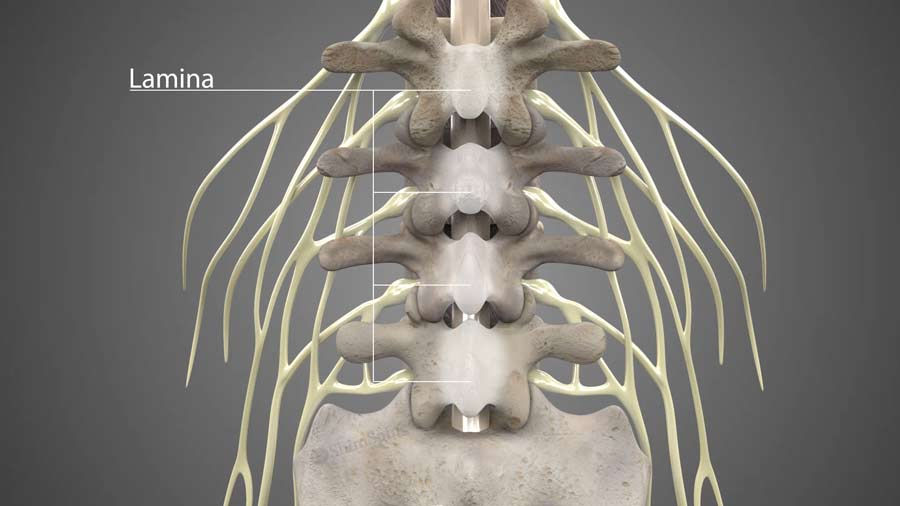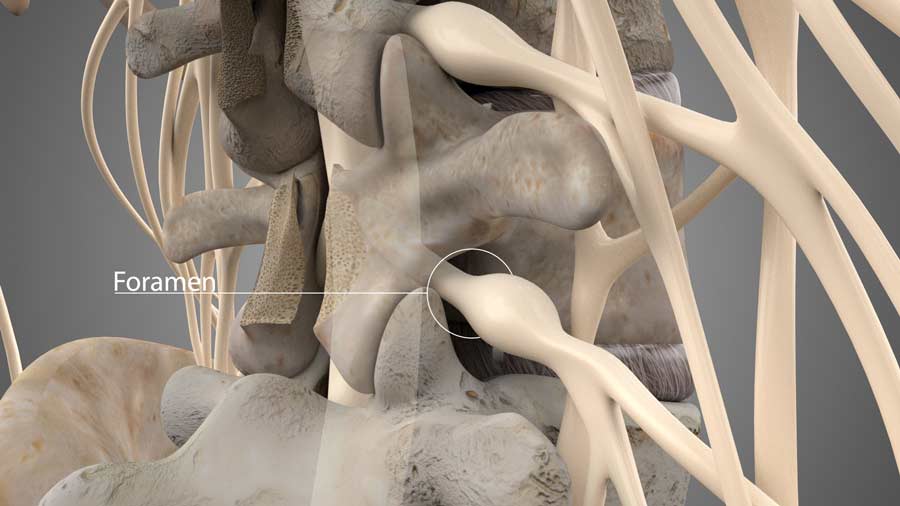Lumbar Laminectomy
Here’s what you need to know about lumbar laminectomy:
Description of surgery
The purpose of the surgery is to relieve the compression of the spinal nerves by removing the back portion of a vertebra in your lower back. That area of boney compression on the nerve is called the area of spinal stenosis.

The surgeon makes an incision to the middle of the lower spine, over the area that requires bone removal. The back muscles are gently retracted to allow visualization of the boney covering, or lamina, and the ligaments that cover the spinal canal. Care is taken to identify and protect the nerve sac. Bone will need to be removed to better visualize the area of stenosis. Bone spurs that are found to be irritating the nerves are removed. Burs, kerrison punches, and curettes are tools used to remove the bone , relieving pressure on the nerve sac as well as the nerves themselves. This provides more room for the nerves to exit the foramen, which is the hole used by the nerve to exit out the center of the spine, and travel into your legs.

The surgery takes 1 to 3 hours, depending on the complexity of the case and the number of levels involved. In the past, patients stayed in the hospital for one to three days for the initial recovery process. These days, many patients can go home on the same day of the operation. The majority of patients are able to resume normal activities within a few months post-op.
Why get it?
Before deciding to undergo surgery, the patient should receive non-surgical treatment over the course of six to twelve weeks. If the pain continues to worsen or you’re currently suffering from severe debilitating pain, contact your doctor to see if surgery is right for you.

A lumbar laminectomy is recommended for patients whose spinal stenosis findings match their symptoms. To review, Spinal stenosis is the narrowing of the space within the spine, which often results in symptoms of pain from the increased pressure or pinching of the spinal nerves.
Why not? Potential complications
It is important to note that lumbar laminectomy primarily aims to reduce leg pain and improve leg function with 85 to 90% of patients reporting improvements after surgery. Unfortunately, lower back pain does not predictably improve following this procedure.
The spine bones and ligaments do have an important function of providing support and stability of the vertebrae. This stability can be compromised by removing these structures. While necessary during laminectomy, it may increase the risk for having a spinal fusion. If you have specific questions or concerns, please discuss them with your doctor. The reoperation rate ranges from 10 to 15% with the majority of patients reporting back pain as the most common complaint.
Related studies
Many studies have compared the outcomes of lumbar laminectomy alone and the laminectomy and fusion. Laminectomies have been shown to have better patient outcomes when the patient reports no instability. The additional fusion is reported to have better outcomes for patients with spondylolisthesis. Please review my prior video on spondylolithesis.
Ultimately though, your doctor will review your symptoms and clinical findings to determine which surgical approach is best.
I hoped this helped your understanding of lumbar laminectomy. Until next time, this is Dr. John Shim.
Additional Resources:
https://ejns.springeropen.com/articles/10.1186/s41984-020-00087-6
Citations
- Bydon M, Macki M, Abt NB, Sciubba DM, Wolinsky JP, Witham TF, Gokaslan ZL, Bydon A. Clinical and surgical outcomes after lumbar laminectomy: An analysis of 500 patients. Surg Neurol Int. 2015;6(Suppl 4):S190-3. PubMed PMID: 26005583
- Shah M, Kolb B, Yilmaz E, Halalmeh DR, Moisi MD. Comparison of Lumbar Laminectomy Alone, Lumbar Laminectomy and Fusion, Stand-alone Anterior Lumbar Interbody Fusion, and Stand-alone Lateral Lumbar Interbody Fusion for Treatment of Lumbar Spinal Stenosis: A Review of the Literature. Cureus. 2019 Sep 18;11(9):e5691. PubMed PMID: 31720159
Last modified: March 18, 2021









